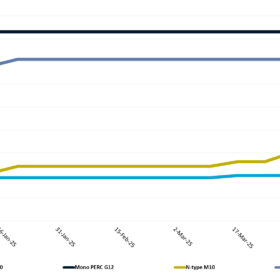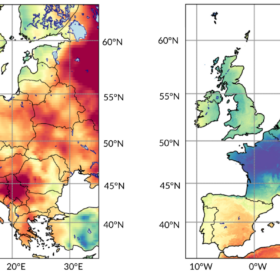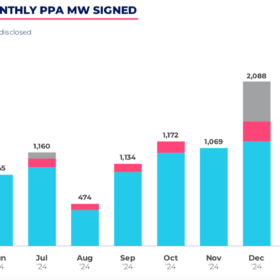Tariffs the least of U.S. solar market’s worries
While President Donald Trump’s sweeping levies on foreign imports have captured global headlines, antidumping and countervailing duty (AD/CVD) investigations into Southeast Asian products, along with a potential expansion of the Uyghur Forced Labor Prevention Act (UFLPA), could pose even greater risks for US solar and energy storage.
Women in leadership should not adopt a ‘tough’ character
This week, Women in Solar Europe (WiSEu) gives voice to María del Puy Ayerra, Head of Business Development Iberia at Spain’s Zelestra. She encountered isolated experiences that reflected subtle gender bias – particularly the assumption that women in leadership must adopt a “tough” character to survive in a male-dominated environment. “These stereotypes can be limiting and disheartening, especially for women who lead with empathy, collaboration, and strength of vision,” she states.
ReNew inaugurates 1.3 GWp solar project in northwestern India
ReNew has inaugurated a 1.3 GWp solar project in Rajasthan, India, using mostly in-house solar panels to supply power at INR 2.18 ($0.026)/kWh. The project spans 3,500 acres and is expected to generate 2,490 million units of electricity per year.
Solar wafer price outlook turns pessimistic, global flows shift with evolving trade policies
In a new weekly update for pv magazine, OPIS, a Dow Jones company, provides a quick look at the main price trends in the global PV industry.
New WMO analysis underscores 2024’s solar anomalies
In a new weekly update for pv magazine, Solcast, a DNV company, writes that while findings from the The European State of the Climate 2024 report align with its own solar analysis covering last year, differences in anomaly magnitude between the two datasets stem from the climatology periods used.
Swiss researchers developing control algorithm for grid-forming inverters
Researchers at ETH Zurich have patented a grid-forming inverter algorithm that stabilizes frequency while protecting devices from damage by independently controlling frequency, voltage, and current.
Pexapark records 24 European PPAs for over 1.5 GW in March
Pexapark registered a notable increase in power purchase agreements (PPA) in March, with solar deals accounting for almost 1.4 GW of the total disclosed capacity.
Germany’s PV installations down sharply in March
Germany installed just 787.2 MW of new PV capacity in March – the lowest monthly total since December 2022.
Turkey’s solar capacity surpasses 21 GW
Turkey’s rapid rise in solar deployment has been largely attributed to the installation of unlicensed solar power plants for self consumption in the commercial and industrial sector.
Irish and UK grids linked via 500 MW subsea HVDC cable
The Greenlink Interconnector comprises two high-voltage direct current (HVDC) cables reaching across the Irish Sea connecting the grids of Ireland and the United Kingdom at the Great Island substation in County Wexford and Pembroke substation in Pembrokeshire, Wales.










